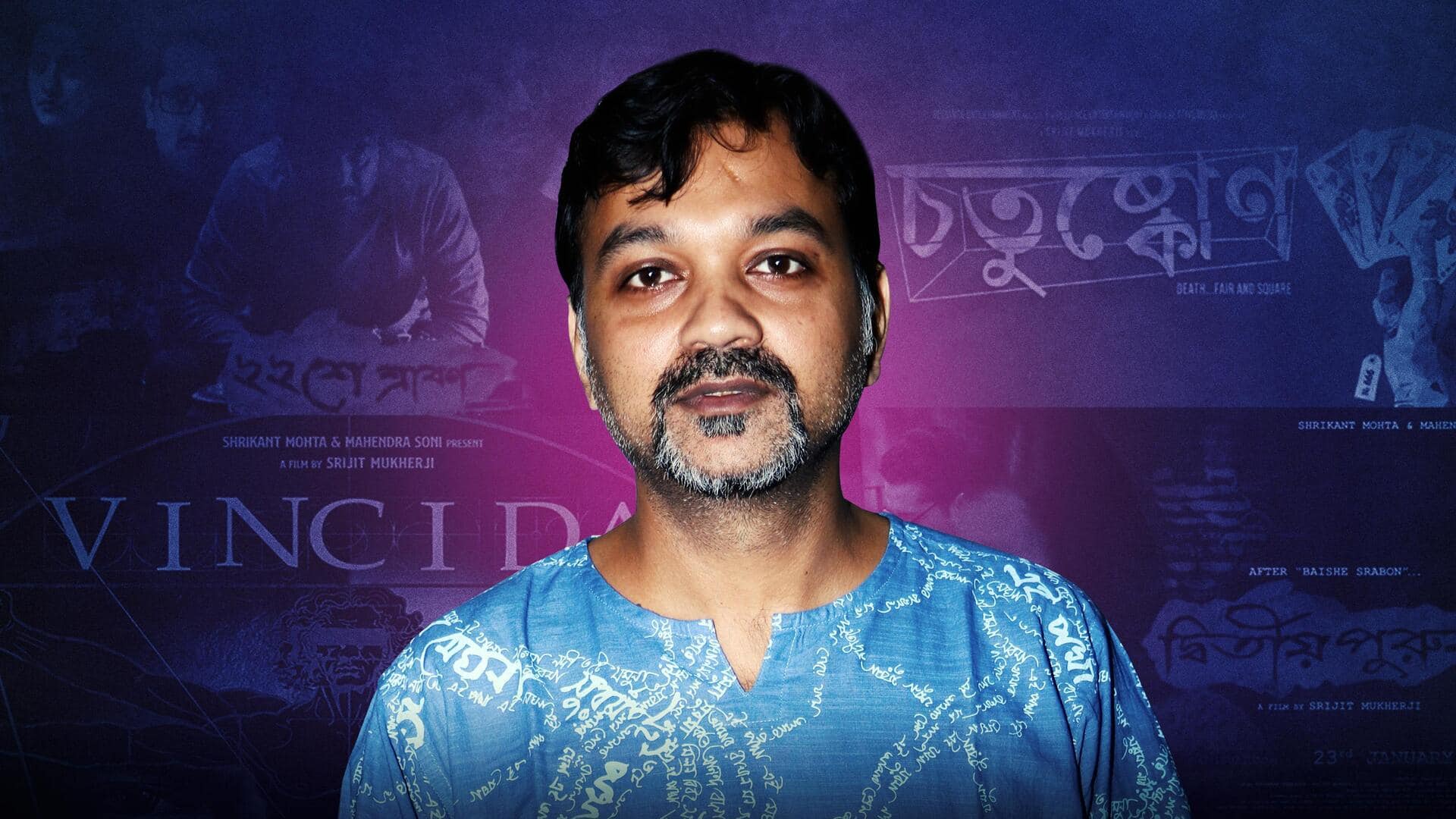
Before 'Dawshom Awbotaar,' dissecting Srijit Mukherji's technique of helming thrillers
What's the story
Srijit Mukherji and Durga Puja releases are definitely one of the favorite combos for Bengali cinephiles. The director is gearing up for a Durga Puja release after four years and fans are quite excited about Dawshom Awbotaar. Mukherji has been vocal about the thriller genre being his home turf. As another Mukherji classic thriller hits the celluloid, let's dissect his filmmaking in this genre.
Foundation
Exploring Mukherji's love for thriller as a genre
The National Award-winning director has a unique quality of reinventing his strengths but somehow manages to stick around his trademark style of filmmaking too. From Baishe Srabon to Chotushkone to Vinci Da to Dwitiyo Purush, his idea of thrillers has not been restricted to the classic whodunit format. Interestingly, Mukherji has also inculcated certain thriller elements in his other directorial projects.
Narrative
Nonlinear narrative: Mukherji's 'brahmastra' for packaging successful thrillers
The director has spoken about his affinity toward nonlinear narratives in many interviews and the same becomes a key point in thriller as a genre. His nonlinear narrative prowess heightens in Chotushkone. It revolves around four famous directors and old friends who're reunited by an unknown producer to make a film. They make four short stories in this film with one theme—Death.
Must watch
'Chotushkone': A masterclass on thriller films
As the name of the film suggests, the movie is like a quadrangle. There are four subplots and they together make one big plot. Like a classic whodunit thriller, Chotushkone turns the table in the climax. To date, all his twists have been spot-on and hailed by viewers. Mukherji's screenplays are so tight that it adds up to the much-needed dynamic tension.
Writing
Mukherji's writing treatment in a nutshell
Speaking about his writing technique, Mukherji has stated that he tends to write the crux scene (the important conflict point) first. Be it the climax of Baishe Srabon, where Probir Roy Chowdhury (Prosenjit Chatterjee) unravels the mystery and kills himself or how Bijoy Poddar and Khoka (Anirban Bhattacharya) look the same even after belonging to the same cop universe, these were his first scenes.
Key elements
Adding more layers with other key elements
Mukherji's thrillers get layered with his distinct cinematography, color grading, and block frames. In Chotushkone, the four sub-plots are shot in four key tones—red, green, blue, black and white—and when these four tones mix, the actual story comes in color, adding as the film's subtext. Mukherji's trademark breathing camera movement during a heated dialogue exchange between two characters adds to the drama.
Music
Dropping hints through music
Mukherji's key element is music and he uses them to drop crucial hints about narratives. In Vinci Da, Tomar Mone's lyrics give us a detailed description of the protagonist's mind space. The line "Tumi dekhcho take, bhabcho jaake, shey ashol manush noy," which translates to "The man you are seeing and thinking is not the real man." The song encapsulates the plotline perfectly.
Information
'Aami Aachi' reveals the main plot of 'Dwitiyo Purush'
Interestingly, in Dwitiyo Purush's opening credits song Aami Aachi, Mukherji reveals the main conflict point, yet viewers do not catch it. The lyrics, "Ekhono tumi oshikkare bondi, jano na nijer porichoy," loosely translates to: "You are in denial and do not know your own identity."
Excitement
'Dawshom Awbotaar' in a nutshell
Dawshom Awbotaar marks the inception of Tollywood's first cop universe. It is a double prequel of Baishe Srabon (2011) and Vinci Da (2019). The movie is a mythological thriller and it also stars Jisshu Sengupta and Jaya Ahsan in pivotal roles. Reportedly, the movie follows a howdunit and whydunit narrative. It releases on October 19 in West Bengal and nationwide on October 20.